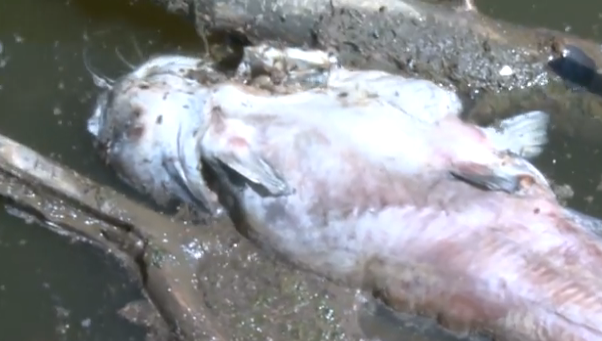
Third Salt Fork River Fish-Kill in Three Years Fits Mysterious Pattern
-
Joe Wertz
For the third year in a row, a large-scale fish-kill has been reported on the Salt Fork River in north-central Oklahoma.
“Hundreds and maybe thousands” of catfish, carp, buffalo and other bottom-feeding fish were likely killed, says Skylar McElhaney, spokeswoman for the Oklahoma Department of Environmental Quality.
The cause of these fish-kills is mysterious, but a pattern is emerging.
The DEQ and the Oklahoma Department of Wildlife Conservation are investigating the fish-kill, which was discovered in a stretch of the river south of Ponca City. Dead fish and water samples were collected and sent to a laboratory for testing, the results of which should be available in mid-August, McElhaney says.
This fish-kill is strikingly similar to ones that have occurred in three previous years, including a large June 2013 die-off, OETA’s Bob Sands reports. In both fish-kills, the Salt Fork changed from muddy to tea-colored, and bottom-dwelling fish died or were seen dying as they gasped for air at the surface. The river also had an unusual smell and metallic taste, Sands reports.
Bill Wentroth, the North Central Regional Fisheries Supervisor for the state Department of Wildlife Conservation, told OETA that preliminary tests of water samples from the river showed extraordinarily high salinity levels, even for the Salt Fork: 9,300 to 9,400 microsiemens, compared to 150 to 500 microsiemens for a healthy freshwater river.
The investigation into the cause of the fish-kill has just started, but Wentroth tells OETA that saltwater from oil and natural gas fields in the area “possibly could be associated with the kill:”
“There are really no other areas where that high of salt could come into that river system than through oil field activities.”
State investigators were alerted to this fish-kill more quickly than other Salt Fork River die-offs, so officials are hopeful they have a better chance at determining the source of the contamination, OETA reports.
